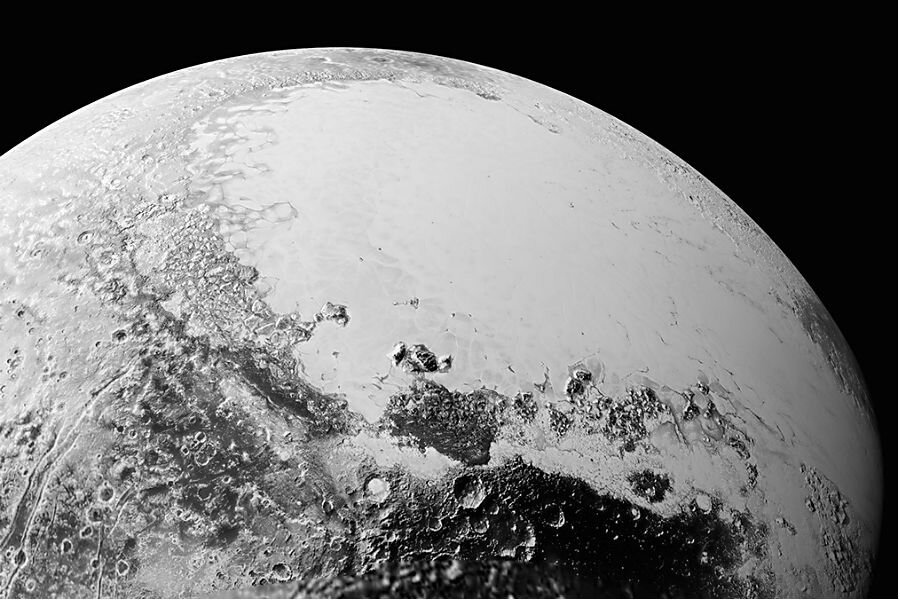Spectacular new Pluto photos reveal dwarf planet's history
Loading...
Scientists are getting intimate with Pluto, and they are bewildered. A set of new photos taken by NASA’s New Horizons spacecraft reveal a complex range of geographic features that speak to the history of the solar system.
New Horizons Principal Investigator Alan Stern tells NASA that such variance of terrain was entirely unexpected: ancient, heavy craters next to bright, smooth young terrain, a jumble of mountains, and fields of mystifying ridges.
“Pluto is showing us a diversity of landforms and complexity of processes that rival anything we’ve seen in the solar system,” Dr. Stern, of the Southwest Research Institute, says. “If an artist had painted this Pluto before our flyby, I probably would have called it over the top – but that’s what is actually there.”
The high-resolution photos, from New Horizon’s flyby of Pluto in July, show the view of the planet if we were about 1,100 miles above its equator. Taken by the spacecraft’s Long Range Reconnaissance Imager (LORRI), they reveal valleys that may have been formed by material flowing through the planet’s surface, possible dunes, and nitrogen ice flows that percolated from mountains into plains.
Certain terrain, such as the dunes, suggest that Pluto’s atmosphere has changed over time – a “head-scratcher,” according to William B. McKinnon, a leader on the New Horizons Geology, Geophysics and Imaging team (GGI) at NASA’s Ames Research Center.
Jeff Moore, head of the GGI, says the complexity of Pluto’s surface is comparable to Mars.
“The randomly jumbled mountains might be huge blocks of hard water ice floating within a vast, denser, softer deposit of frozen nitrogen within the region informally named Sputnik Planum,” Moore says. Photos show a sprawling, broken terrain northwest of Sputnik Planum.
The disarray of geography reminds the scientists of Europa, Jupiter’s icy moon.
The new photos also feature Pluto’s moons, Charon, Nix, and Hydra. Though each moon is unique, Charon is the biggest one, fraught with a violent geological past, including tectonic fracturing.
By processing the images in two different ways, scientists also discovered that Pluto’s bright, atmospheric haze has many more layers than they they had previously believed. The haze produces a twilight that illuminates the surface during dawn and dusk, allowing the sensitive cameras on New Horizons to decipher details in the nighttime.
New Horizons has been downloading the images since Labor Day Weekend, but the ones from the past week have been unprecedented in terms of quality. Even more exciting is the fact that 95 percent of the Pluto data has yet to reach Earth.
In July, LORRI captured the groundbreaking portrait of Pluto when New Horizons finally reached the planet after a nine-year journey of more than 3 billion miles. As of Thursday, it has gone 43 million miles beyond the dwarf planet. The next stop? The Kuiper Belt at the outskirts of the Solar System. The Kuiper Belt is a ring of tens of thousands of bodies, called Kuiper Belt Objects (KBOs), that orbit beyond Neptune. Pluto is classified as a KBO, albeit an exceptionally large one, in addition to being a dwarf planet. [Editor's note: An earlier version misstated the probe's location.]
Specifically, New Horizons will check out a KBO named 2014 MU69, as it’s close enough to the trajectory using remaining fuel. The estimated time of arrival is January 1, 2019.







